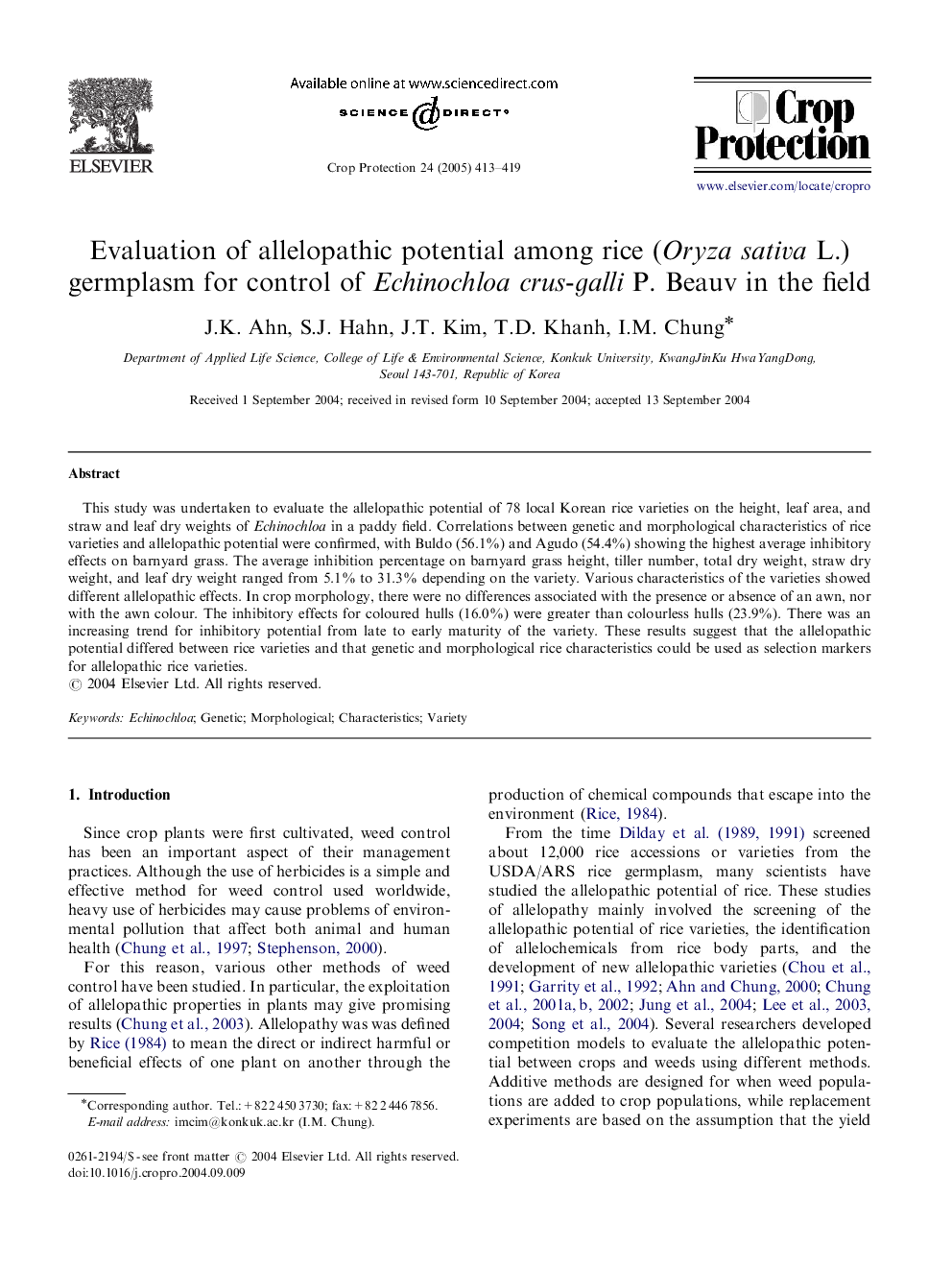| Article ID | Journal | Published Year | Pages | File Type |
|---|---|---|---|---|
| 9473143 | Crop Protection | 2005 | 7 Pages |
Abstract
This study was undertaken to evaluate the allelopathic potential of 78 local Korean rice varieties on the height, leaf area, and straw and leaf dry weights of Echinochloa in a paddy field. Correlations between genetic and morphological characteristics of rice varieties and allelopathic potential were confirmed, with Buldo (56.1%) and Agudo (54.4%) showing the highest average inhibitory effects on barnyard grass. The average inhibition percentage on barnyard grass height, tiller number, total dry weight, straw dry weight, and leaf dry weight ranged from 5.1% to 31.3% depending on the variety. Various characteristics of the varieties showed different allelopathic effects. In crop morphology, there were no differences associated with the presence or absence of an awn, nor with the awn colour. The inhibitory effects for coloured hulls (16.0%) were greater than colourless hulls (23.9%). There was an increasing trend for inhibitory potential from late to early maturity of the variety. These results suggest that the allelopathic potential differed between rice varieties and that genetic and morphological rice characteristics could be used as selection markers for allelopathic rice varieties.
Related Topics
Life Sciences
Agricultural and Biological Sciences
Agronomy and Crop Science
Authors
J.K. Ahn, S.J. Hahn, J.T. Kim, T.D. Khanh, I.M. Chung,
